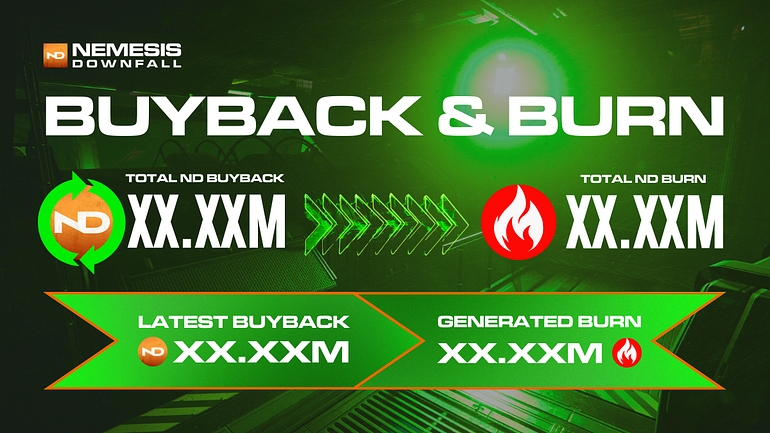
Deflation & Burn
Latest Burns:



Deflationary model of the ND token
What is a deflationary token ?
In simple terms, a deflationary model in cryptocurrency refers to a mechanism designed to decrease the supply of a token over time. This reduction in supply is achieved through various techniques, such as token burning, where a portion of the tokens is intentionally removed from circulation and rendered unusable.
Unlike traditional inflationary models, where new tokens are constantly minted, deflationary models work in the opposite direction, striving to make each token more valuable by reducing the total supply. This scarcity can drive demand, leading to an increase in the token’s price as more holders seek to acquire it.
How is the ND token deflationary:
We are using different mechanisms to make the ND deflationary, covering all areas of the project, from product to market to revenue.
Product: Economy and rewards generated burn
The project guaranties a burn effort directly through the Nemesis Downfall game as every rewards distribution to players generates an associated 20% burn. The tokens burnt are withheld before distribution, ensuring it is not taken from players rewards but from project reserves.
Additionally, the future features of the game such as the seasonal pass, competitive games etc. will generate a percentage of burn, involving users in the burn effort.
Both streams will scale directly and largely with the game adoption and community growth.

Market: Liquidity Incentive & burn
To support the market, the project has launched a Liquidity Incentive Program, essentially acting as a double burn mechanism:
The stable coins obtained are used to add liquidity to our pairs (mainly our PancakeSwap ND/UST pair), allowing us to improve token market availability and facilitate buys & sells.
The LP tokens are locked 20 years, essentially equaling a burn of the underlying ND tokens.
In addition, the project burns an amount of ND tokens proportional to the added liquidity.

Revenues: Buyback and Burn
In the future, it is our intention to use a part of the revenues generated by the game in non-ND tokens to buyback ND tokens on the market and burn them.
These Buybacks will start once we hit revenues above the threshold necessary to run the game, cover infrastructure costs and project expenses etc. They will scale up with game adoption and community growth.

Other deflationary levers
We are considering other means of making the ND token deflationary, including temporary ones through stakings and / or LP farming. However these mechanisms do tend to reduce the amount of circulating token on the short term, but at the cost of an overall dilution of holders which needs to be carefully thought through. We are also studying the possibilities offered by in-game staking with different types of rewards, and will communicate more on these when we get into these developments.
How do burns serve ND holders?
Increased Scarcity
By decreasing the token supply through mechanisms like burning, a deflationary model enhances scarcity. With fewer tokens available for trading, the existing tokens become more valuable. This scarcity can create a sense of exclusivity, attracting buyers who anticipate future price appreciation.
Price Appreciation
As the token supply diminishes and demand remains constant or increases, the price of the token tends to rise. This price appreciation benefits holders, allowing them to profit from their investment as the value of their tokens increases over time. In essence, holding onto deflationary tokens can serve as a hedge against inflation and a means to preserve and grow wealth.
Community Engagement
Our Deflationary mechanisms incentivizes community engagement. Anyone willing to participate to the burn effort can play the game and/or participate to the Liquidity Incentives program. This fosters a sense of belonging and encourages long-term commitment among holders, thereby strengthening the project’s community and sustainability.
Deflationary Pressure
The constant reduction in token supply exerts deflationary pressure on the token’s value. This means that over time, each token becomes increasingly valuable, incentivizing holders to retain their investment rather than sell. Consequently, a deflationary model can contribute to price stability and reduce the risk of significant price fluctuations.
The ND token plays a central role as the utility token of the Nemesis Downfall game and runs its entire economy. For the project and game to be successful, it must remain attractive to holders and potential investors, and its deflationary model is here to ensure this. With time, we’ll work on more token uses and mechanisms to improve its attractivity even further.
Last updated